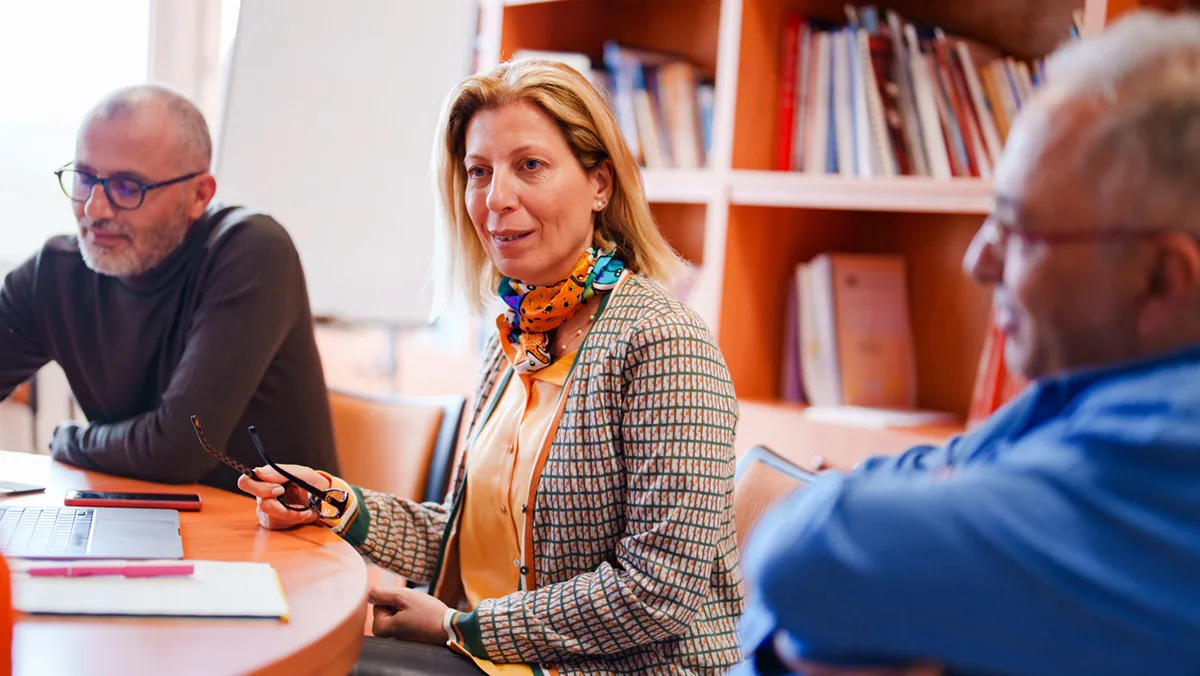
Overview
Mahzi Therapeutics bridges the gap between patient advocates and researchers, accelerating the development of treatments for rare genetic neurodevelopmental disorders.
Advancing Genetic Therapies Through Patient-Scientist Partnerships
Patient advocates and bench scientists often fight disease in silos that rarely interact. But at Mahzi Therapeutics, a San Francisco-based biotech focused on genetic neurodevelopmental disorders, these groups meet regularly to collaborate on solutions for the biggest problems in rare disease research.
Such partnerships are foundational to the company, which is named for the Greek word for “together.”
Yael Weiss, MD, PhD, founder and CEO of Mahzi Therapeutics, launched the company in 2021 after working at a different rare disease biotech and seeing how parents and advocates pushed forward much of the research in the rare disease space.
“A lot of these groups are funding research, usually in academic institutes or labs,” Weiss said, but they can get stuck, “because most of them don't have the resources or expertise to take these therapies any further.”
That’s where Mahzi comes in.
The Patient Centered Approach to Rare Disease Innovation
These days, Weiss said, “everybody says that they are patient centric.” But at Mahzi the relationship with patients and patient advocacy groups starts early.
Though each such illness may only impact a small number of people, millions of people around the world are impacted by rare diseases. Patients and their advocates, frustrated by the lack of investment dollars in the space, have increasingly begun taking research into their own hands. Many rare disease advocacy groups also now band together to collectively fund early-stage research at academic institutions. Still, research may have trouble advancing from the lab bench into the clinic.
“Many companies are concerned about exposing their pipeline too early, or telling patients that they'll have a drug and then ending up shelving it,” Weiss said. But because the disorders in Mahzi’s clinical pipeline have never been targeted in a clinical trial before, “we really need the patient community to help us define what a clinical trial would look like,” Weiss said.
Partnering closely with patient advocacy groups can help with designing the clinical trial, determining which outcome measurements are most important and more.
For example, children with a rare neurodevelopmental disorder may need certain mobility and other accommodations during the clinical trial intervention that researchers don’t think about, like access to a special bed in hotel rooms. Parents and other caregivers can make these access needs known during the protocol development process.
“For us, it's a prerequisite to have a strong patient advocacy group,” Weiss said.
To facilitate regular communication, Mahzi has monthly meetings with patient advocacy groups for its top indications: SCAR12 and WOREE syndromes, Pitt-Hopkins syndrome and CHD2 neurodevelopmental disorders.
Mahzi also works closely with these patient advocacy groups to move therapeutics into advanced clinical trials and, hopefully one day, into the marketplace. The company also partners with global nonprofits like Global Genes and the Rare Epilepsy Network to conduct workshops focused on accelerating new therapies.
Pitt-Hopkins Syndrome: A Patient Advocacy Win
One of Mahzi’s leading indications is Pitt-Hopkins syndrome (PTHS), a rare genetic neurological disease that can cause distinctive facial features, intellectual disability, impaired speech, seizures, breathing pattern abnormalities and other symptoms. Though the Cleveland Clinic says there are about 500 people worldwide that have the syndrome, the Pitt Hopkins Research Foundation says that closer to 1,500 families with PTHS have the disorder.
In 2007, researchers found the cause of the syndrome: a mutation in a single gene in chromosome 18 called TCF4.
The Pitt Hopkins Research Foundation, formed by several families of children with PTHS, has spent millions of dollars funding research for PTHS. Now, they’re partnering with Mahzi to continue work that first started in the lab of Alysson Muotri, PhD, a professor in the Departments of Pediatrics and Cellular & Molecular Medicine at the University of California, San Diego. In 2022, Muotri and his team published a paper that found in brain organoids modeled on PTHS, effects of mutations to the TCF4 gene are reversible.
Based on this research, Weiss and patient advocates believe that a gene therapy that targets TCF4 could be created to treat PTHS. The Pitt Hopkins Research Foundation, along with the California Institute for Regenerative Medicine and venture capital funders, is now partially funding Mahzi’s PTHS gene therapy treatment, which Mahzi is developing in collaboration with the Muotri lab.
Weiss intends to file an Investigational New Drug Application for the therapy, an AAV9 based gene replacement approach, soon.
PTHS is just one example of how Mahzi partners with patient advocacy groups, academic institutions, foundations and other groups to bring a rare disease discovery from the lab bench through the clinical pipeline.
A Focus on Genes
It’s no secret that biotech companies focused on rare disease indications can struggle to find funding. In 2023, only 2 percent of all seed and series A dollars in biotech went to rare disease companies, Deerfield Management’s Mark Veich told BioSpace.
While patient advocacy groups and foundations fund some of Mahzi’s research, the company still has traditional venture capital backers including Venrock, HealthCap, Droia Ventures and others.
Weiss said that what makes Mahzi attractive to investors is the company’s focus on genetic disorders that just recently had a causative gene discovered — like the TCF4 gene for Pitt Hopkins syndrome.
In the neurodevelopmental space specifically, Weiss said, “hundreds of causative genes” have been identified in the last handful of years. This means that patients who were previously only given a clinical diagnosis can now also be given a genetic diagnosis.
And, Weiss pointed out, it also means that genetic tests can be done for people who weren’t diagnosed in the past.
“The idea is to work on disorders that are currently under-diagnosed, but there are likely a lot more patients out there,” Weiss said. “We’ll build a more commercially viable story as we advance.”
Along with these new genetic diagnoses will also hopefully come new genetic targets that can be treated, or even cured, with gene therapies.
“This is really a grassroots effort, and it will be done with or without pharma,” Weiss said. “There are very strong and dedicated people behind it, and that's why I chose to be on their side.”







